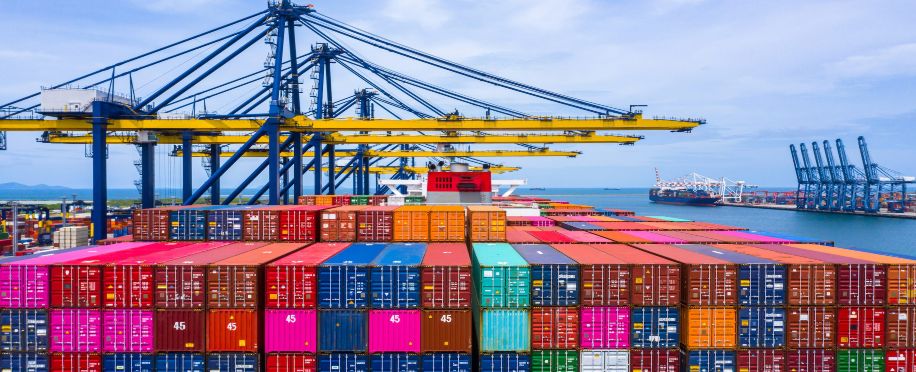Copyright © 2025 lmitac.com All Rights Reserved. Contact - Terms and Conditions - Privacy Policy - Quality Policy - Become an instructor - Vacancies - Sitemap
London Maritime Academy is a trade name for London Premier Groupversion: 2.9.0
London Maritime Academy is a trade name for London Premier Group

Posted on : 7/22/2023, 8:00:59 PM
Container shipping is one of the leading shipping methods in today's trade market. It's famous for dry and wet freight because it keeps goods safe until they reach their destinations.
Nevertheless, container shipping is predicted to grow even further in the future. With new technological advancements and innovation, container shipping will dominate shipping technologies.
This article will dive into container shipping and its new technologies.
Containers are substantial metal boxes that shipping companies use as a standard option for freight transportation by sea. However, containers are also used in other forms of transport worldwide; they're loaded on a carrier truck to ship cars, electronics and other goods.
When it comes to the international maritime shipping trade, containers play a major role in loading cargo onto and off ships with ease. They're the hidden magical element that transforms shipping by vessels into a smooth process.
Key points to take away:
The types and range of freight shipped in containers can vary, from fruit and vegetables to automobiles.
The shipping industry plays a vital role in a country's economy.
Container shipping is a global trade, and it's trendy in East Asia like Shanghai, China and Singapore, as well as in North America.
A standardised container measures the same in height and width. However, they vary in length. They can be 10ft, 20ft or 40ft.
As Shipping management training Courses explain, the process goes like this:
After the goods have reached the port and the ship is at bay, these goods are integrated into the containers through two options:
Full Container Load (FCL): Where the container is at total capacity.
Less-than-container Load (LCL): Otherwise known as break bulk shipments. Where the freight only fills up part of the container.
Now that the goods have been loaded in their assigned containers, it's time to get them onto the ship so they can be safely transported across the ocean and unloaded in their destined locations.
First, they are transported to the ship's side by a bomb cart and must be placed in a specific spot based on their weight, length and other factors. (this is usually done at a port's terminal).
Then, they're attached to a solid, reliable crane that lifts the container to its spot on the ship's platform through a precise and calculated movement.
As we've previously mentioned, innovations in container shipping technologies are only growing as time goes by; here are a few of these innovations:

Automating the shipping management process with new technologies is predicted to make it more efficient, sustainable, modern and consumer-friendly.
Using this new technology, customers can get live information about the state of their shipment; they can track their load and check online when the carriers are arriving at the ports and when their freight will be delivered, making shipping services more user-friendly.
Every day, we discover a new and more straightforward method to make tasks easier through technology, and marine operations are no exception to that evolution.
Advancements in container shipping technology allow shipping companies to cut costs by eliminating human error, implementing advanced logistics, improving operational systems, and reducing fuel consumption.
Shipping companies can offer lower rates while maintaining a high-quality service by using automated carrier vehicles, data science to design ships' travel routes, and many more.
The rule of thumb is, containerised freight is safe freight. That's why most companies that ship goods overseas use container shipping.
Improvements in container shipping technologies (including automated carriers and cranes, variable container options, and implementing intermodal shipping methods) have multiple benefits. These include:
Loading and unloading containers from ships efficiently.
Reducing the time and labour required for cargo handling.
Providing more efficient options for larger or smaller freight instead of sticking to one regular size.
Sustainability is exceptionally hot in the maritime world today, as many shipping companies are investing in sustainable methods to increase their earnings while spending less.
When it comes to container shipping, international shipping companies are trying to explore new ways to make the shipping process more sustainable:
Innovating new technologies that save energy, including electric trucks and trains.
Providing cleaner fuels like natural gas as an alternative to diesel fuel.
Wind turbines generate electricity while ships are docked at ports or within their facilities.
These vessels have the necessary equipment to unload by themselves after they enter the port instead of using equipment like cranes or forklifts.
This method of container shipping offers the option for automation when it comes to loading and unloading shipping containers, making it more efficient and reducing the costs of the shipping process.
Container shipping allows for the optimal amounts of innovation at sea. Whether through technology or sustainable operations, container shipping is the future of marine operations and must be the target of every shipping company’s effort.